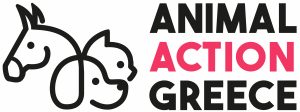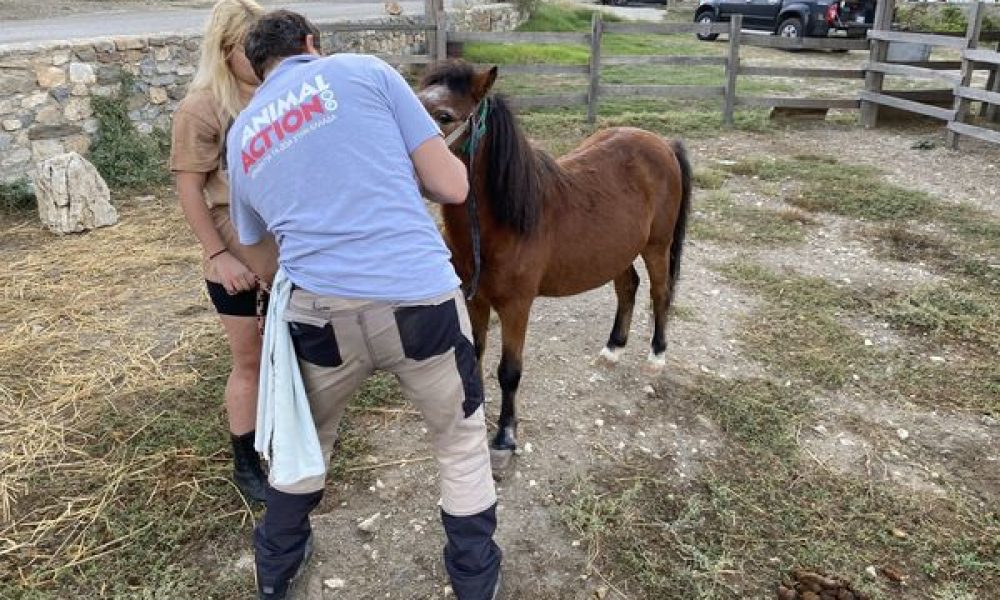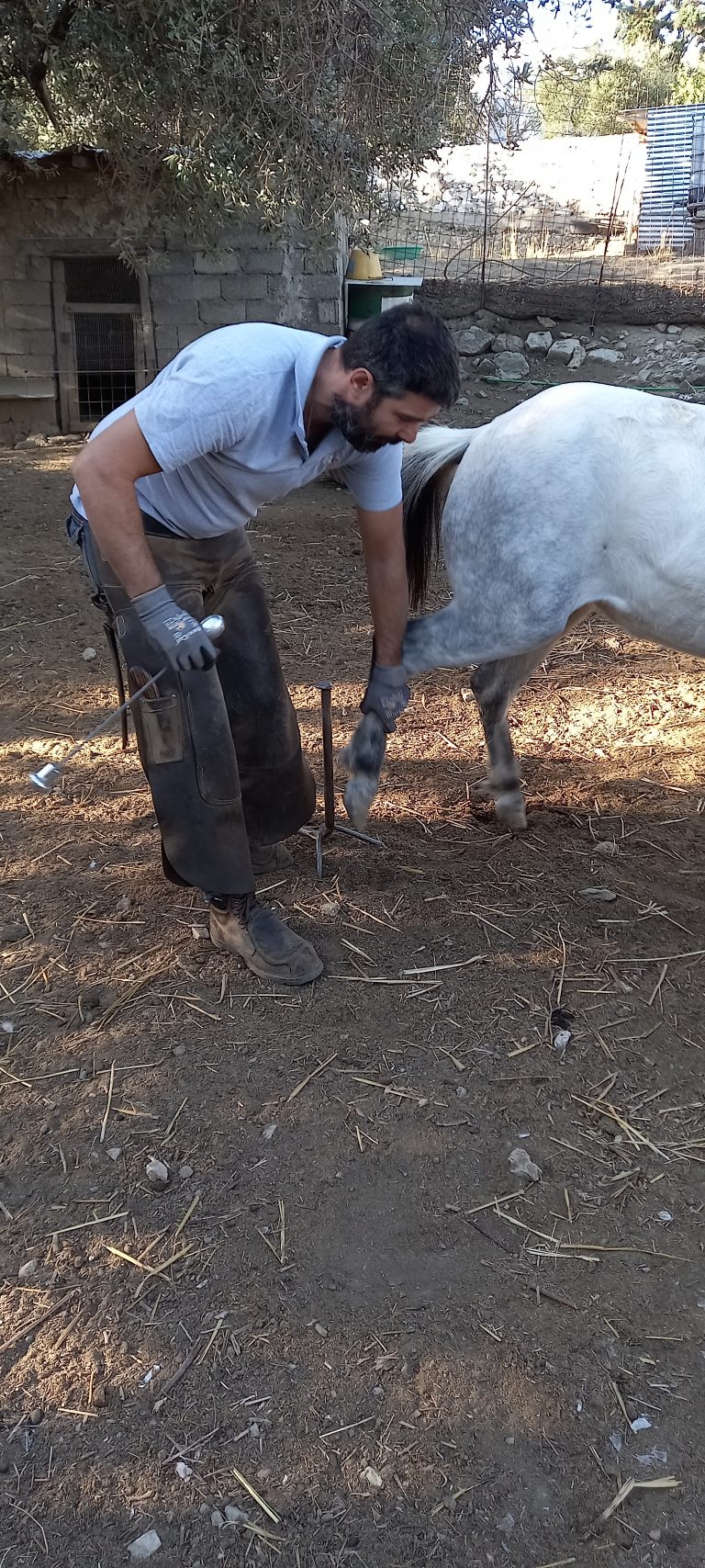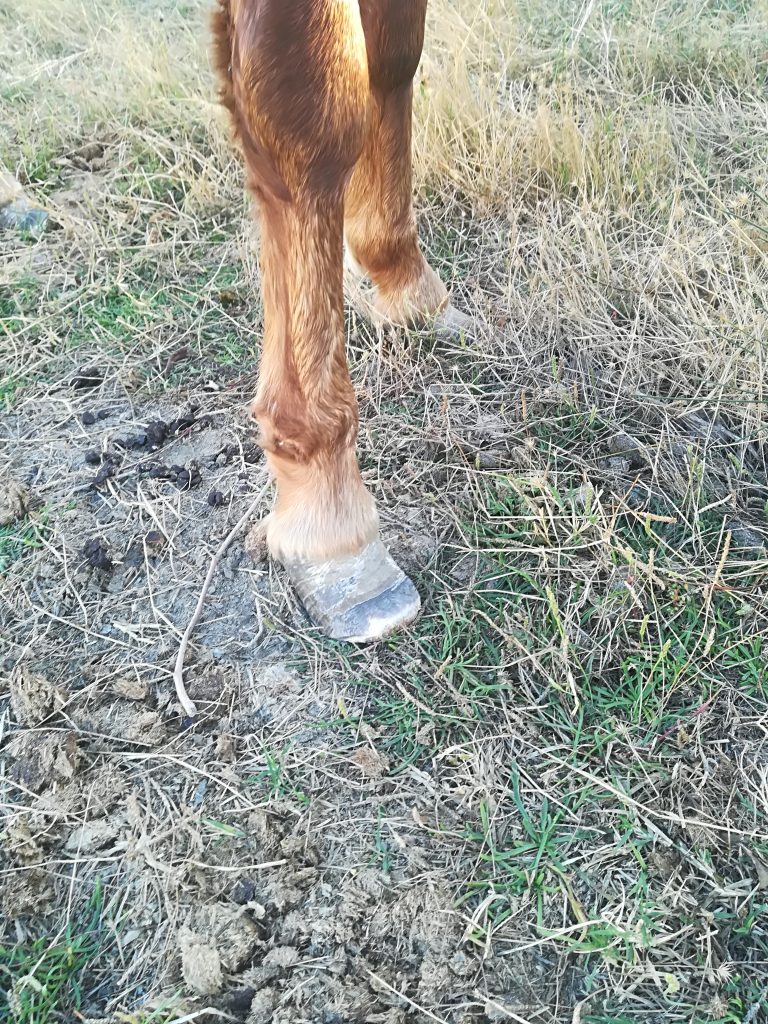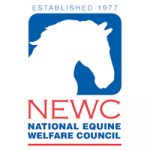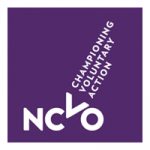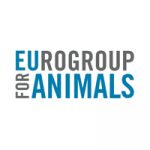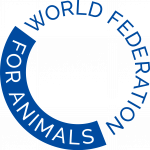On October 27-29, the Animal Action Greece Equine Care team made a three-day visit to the island of Skyros, in order to provide veterinary, dental and farriery care to the island’s equids.
Veterinarian Kostas Okkas, equine dental technician Alkis Gkeskos and farrier Tasos Skyllas offered their services to 72 Skyrian horses and 1 donkey.
The Skyrian horse is an ancient Greek breed which survived only on Skyros and today counts around 190 members on the island and 300 worldwide. It is a small-sized breed, which is unique in the world.
The Skyrian horses constitute an important part of the island’s tradition: their participation in social and economic life in Skyros used to be crucial, since horses were part of agriculture for decades.
The mechanization of agricultural production and the excessive grazing of the growing sheep and goat population leaded to deterioration of the natural diversity, as well as a decrease in available food resources for horses, therefore threatening the species with extinction. In recent decades, private efforts have been made to save the breed, either individually or through the creation of non-profit organizations. Animal Action Greece offers its unique professional services to animals that are either in the hands of individuals or under the protection of these organizations and in this way helps to increase their level of welfare, therefore help towards their preservation.
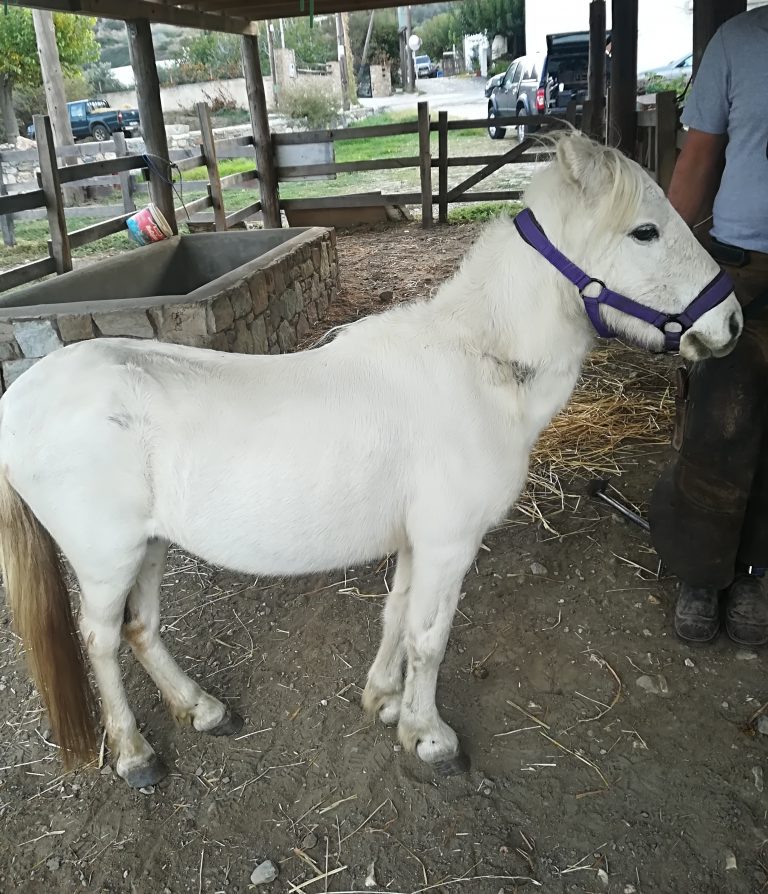
The general condition of most of the animals examined by our equine team was very good, both in terms of body condition, as well as regarding “feet and teeth” problems.
Most owners love and care for their animals, thus contributing to the preservation and rescue of this special Greek breed. The vast majority of animals we handled required tooth rasping due to the normal development of dental sharp enamel points.
Several animals were sedated as they were quite difficult to handle, this way our team managed to offer more safely and in more detail its services. Almost all animals required hoof trimming, while one cracked hoof and several hooves with white line disease were also treated. This year, perhaps due to the warm weather conditions, we noticed a particular problem of ectoparasites in most of the animals; detailed instructions were given to the owners by our vet on how to properly deal with flies and other annoying insects.
During the three days, we came across two serious cases that we were concerned of also last year. The first one had chronic laminitis and overgrown hooves, for at least three years, due to a wrong feeding scheme with excess carbohydrates. This year, the situation had clearly improved, as our instructions for correct feeding had been followed precisely by the owner of the animal. Of course due to the lack of a farrier, the hooves were overgrown again and it needed a lot of hard work to trim them back to the normal shape.
The second case was also related to very severe chronic laminitis. We had seen this animal the previous year, but it was impossible to help at that time, as a few days before our visit, some ignorant amateur farrier had interfered and had cut the hooves with an ax!! This year we managed with great difficulty to trim and bring the hooves to the normal shape, while clear and detailed feeding instructions were given, both to the owners and to the neighbours. We are optimistic that our advice will be followed and the animal will be in a better condition in our next visit.
We would like to thank the Skyros Shipping Company for offering free ferry tickets and the owner of Nefeli Hotel for offering one more year accommodation to our team. Special thanks to Manolis Trachanas, the owner of “Mouries Farm”, who provided meals for our group, and for being with us all the time, as well as Danae Christodoulou, who organized with him the entire schedule of visits around the island’s animals, while facilitating our team’s work every way they could.
